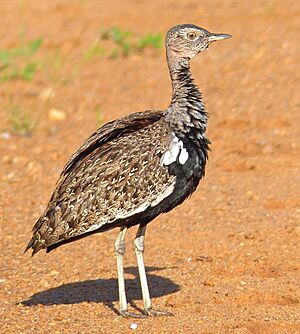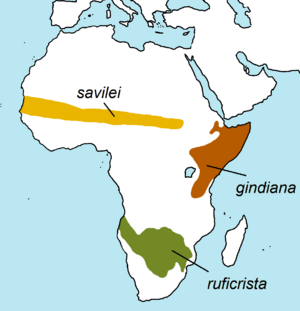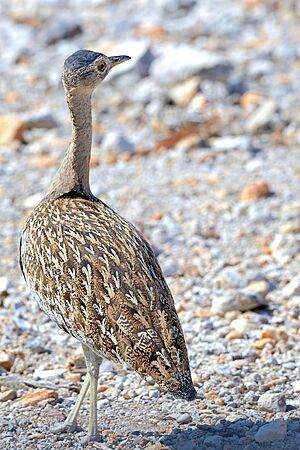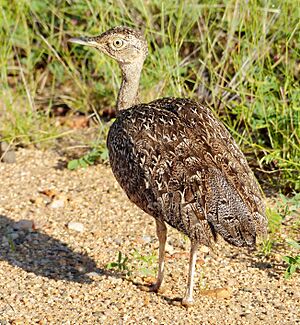Red-crested korhaan facts for kids
Quick facts for kids Red-crested korhaan |
|
|---|---|
 |
|
| Conservation status | |
| Scientific classification | |
| Genus: |
Lophotis
|
| Species: |
ruficrista
|
 |
|
| Range of Lophotis ruficrista | |
The red-crested korhaan or red-crested bustard (Lophotis ruficrista) is a type of bird. It belongs to the Otididae family, which includes bustards. You can find this bird in several countries in southern Africa. These include Angola, Botswana, Eswatini, Mozambique, Namibia, South Africa, Zambia, and Zimbabwe.
Contents
Description
The red-crested korhaan can grow up to 50 centimeters (about 1.6 feet) long. It can weigh up to 680 grams (about 1.5 pounds).
Its wings have V-shaped patterns when folded on its back. These patterns are light cream with some white on the sides. The feathers on its chest are black. This bird has pale yellow legs and gray feet.
Sexual Differences
Male and female red-crested korhaans look a bit different. This is called sexual dimorphism. The male bird has gray-blue feathers on its head. It also has a patch of reddish feathers on the back of its neck.
When a male wants to attract a female, it puts on a special display. The feathers on top of its head stand up, forming a crest. Its throat and neck feathers also puff out. Female birds and young birds have brown head feathers instead of gray.
Habitat
The red-crested korhaan lives in many different places. It likes dry savanna areas and bushveld. It also lives in thorny scrubland. Sometimes, you can find it in wet woodlands too. This bird does not migrate; it stays in the same area all year round.
Reproduction
The male red-crested korhaan has a special way to attract females. It flies very high into the air. Then, it drops back down to the ground.
Nests are built on the ground. They are usually hidden by grass or bushes. A female typically lays two eggs. The eggs can be olive-brown to pink-beige in color. They also have dark brown spots.
Chicks leave the nest just a few days after hatching. They follow their mother around. The young birds become independent after about four to five weeks. However, they often stay with their mother for several more months.




